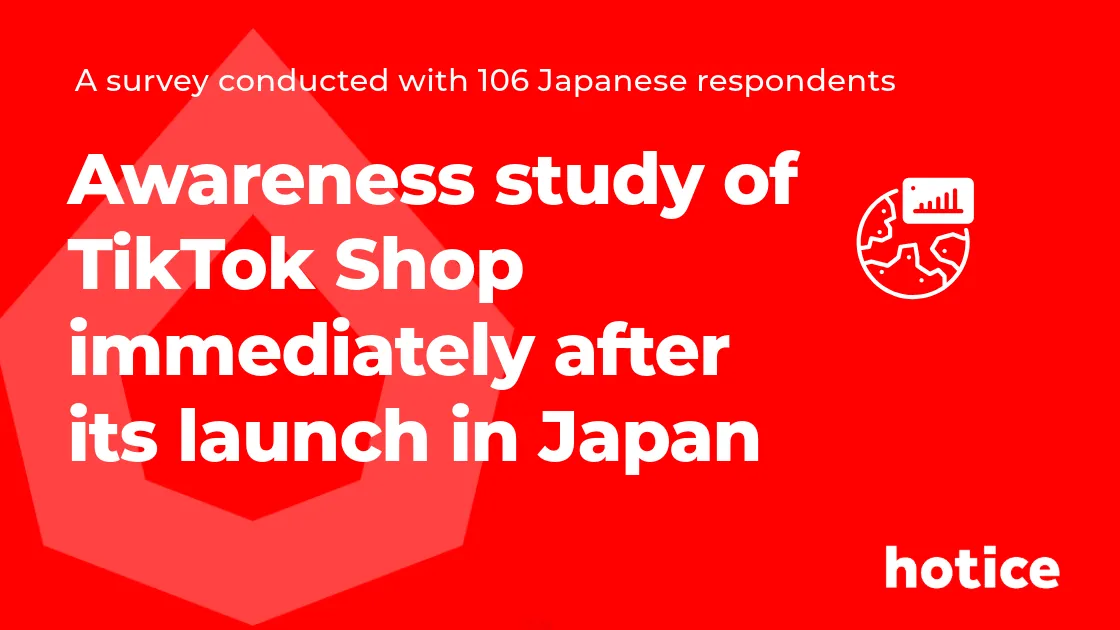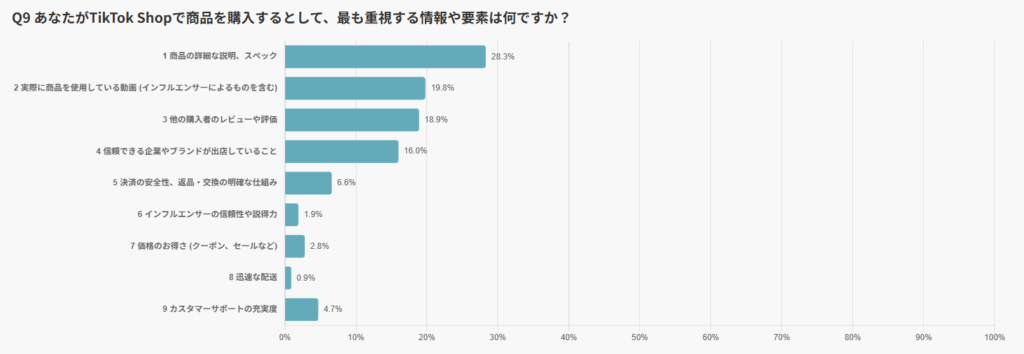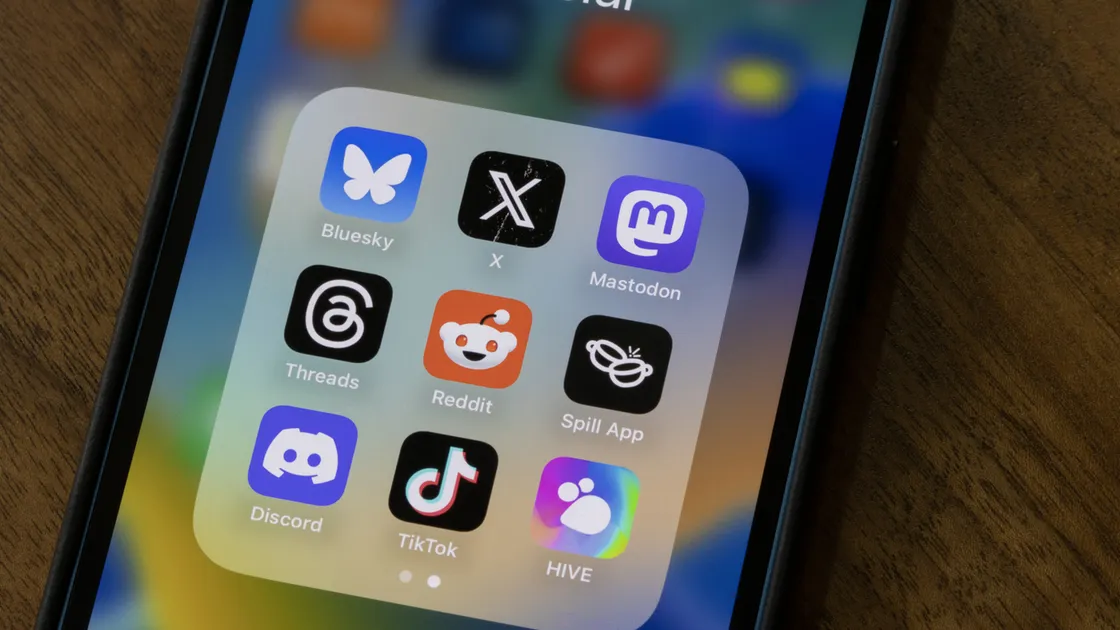TikTok Shop’s First Month in Japan: What the 106 Aware Users Revealed About the Moment They Felt Compelled to Buy

TikTok Shop has been drawing attention through live streams and short-form videos. Now that its full-scale launch in Japan is underway, how many users are actually aware of its presence—and what expectations or concerns do they have?
This survey analyzes insights from 106 respondents who reported being aware of TikTok Shop. It takes a multifaceted look at awareness, usage, perception, and purchase intent.
By visualizing the key elements that drive purchasing behavior—such as effective content characteristics, generational differences in perception, and the traits of trusted influencers—this report highlights both the challenges and opportunities TikTok Shop faces in the Japanese market.
Aimed at brand managers considering TikTok Shop and marketers involved in live commerce initiatives, this report provides actionable data and insights to support strategic planning.
While the total number of survey respondents was 193, this article focuses only on the data from the 106 individuals who answered that they were aware of TikTok Shop.
Survey Overview and Respondent Criteria

This survey was conducted on July 2, 2025, in the form of an online questionnaire, with the goal of understanding awareness and purchase intent toward TikTok Shop.
Respondents who answered “No” to the initial question, “Did you know that TikTok Shop has launched in Japan?”, were excluded from subsequent questions, and the survey was terminated at that point.
As a result, only those who answered “Yes” (106 respondents) proceeded with the rest of the survey.
This report is based on the analysis of the behaviors and attitudes of these 106 TikTok Shop-aware users.
TikTok User Behavior and Viewing Intentions
To gain deeper insight into TikTok Shop, it is essential to first understand how users engage with TikTok itself—their behavior patterns, frequency of use, and primary viewing purposes.
TikTok Usage Frequency

In response to the question about TikTok usage frequency, the most common answer was “multiple times per day,” accounting for approximately 43.4% of all respondents.
This was followed by mid-frequency users who reported using TikTok “once per day” or “several times a month.”
In total, over 80% of respondents use TikTok at least once a week.
A particularly noteworthy trend is the high frequency of use among those in their 20s and 30s.
For these age groups, TikTok appears to function as a daily tool for entertainment and information gathering.
In contrast, users aged 40 and above showed a more varied usage pattern, with a noticeable presence of light users (less than once a month) and non-users.
This suggests that in designing a strategy for TikTok Shop, frequency of TikTok usage can be directly linked to purchase exposure opportunities.
As such, targeting highly active younger users is a logical and strategic entry point.
Purposes for Watching TikTok

In the question about viewing purposes, the most common response was “for entertainment or to pass the time,” selected by 73.4% of respondents. This was followed by answers such as “gathering information (news, trends, life hacks)” and “learning about products or services.”
These results show that TikTok is not only a platform for enjoying entertainment content, but also plays a role in shaping users’ purchasing decisions. In particular, those who chose the latter tend to view TikTok not simply as a source of reference, but as a space where decisive information influences their buying behavior.
This diversity in viewing purposes also has implications for how TikTok Shop strategies should be designed.
Going forward, it will be essential to create content that balances both entertainment appeal and trustworthiness.
Livestreaming and Product Interest: Real User Experiences
To understand the role of livestreaming within TikTok Shop, this section analyzes user responses regarding their viewing experience and the impact it had on their purchasing behavior.
By examining the data, we can gain deeper insights into how real-time content influences product interest and buying decisions.
Experience with Livestream Viewing

In response to the question, “Have you ever watched a livestream on TikTok?”, Answered “Yes,” which accounts for 95% of the 94 users who were aware of TikTok Shop.
In other words, over 90% of those familiar with TikTok Shop have engaged with livestream content on the platform.
This figure highlights that TikTok is not merely a platform for pre-recorded short videos—it is also being actively used as a real-time communication and product discovery channel.
Livestream Viewing and Purchase Motivation

Among the respondents who had experience watching TikTok livestreams, we asked whether they had ever thought, “This product looks good” or “I might want to buy this” after viewing a stream. The results were as follows:
・“I searched for the product and actually purchased it”: 29 respondents (32.6%)
・“I was interested but didn’t end up buying”: 50 respondents (56.2%)
・“I never felt that way”: 10 respondents (11.2%)
These findings show that approximately 90% of livestream viewers experienced some level of product interest as a result of the content—and that one in three went on to take real purchasing action.
This clearly positions livestreaming as more than just a passive form of content. It serves as a powerful engagement touchpoint that drives users through the steps of “viewing → interest → action.”
Reasons for Not Proceeding to Purchase

Among the respondents who answered “I was interested but didn’t end up buying,” we asked for their reasons, allowing multiple selections. The most common response was “I was concerned about the product’s quality,” which was selected 46.7%. Other frequently cited concerns included “I was satisfied just getting the information,” “The price was too high,” and “I didn’t know where to buy it.”
The fact that a total of 102 responses were submitted across multiple selections suggests that the barriers to purchase are driven by a combination of factors—not a single issue. Despite showing interest, users often don’t proceed to purchase due to design and experience barriers such as UI/UX challenges, lack of trust, or unclear information.
For TikTok Shop to gain traction in Japan, it will be essential not only to spark interest through livestreams, but also to create a system that enables users to purchase on the spot without hesitation, and to design information in a way that inspires trust. In particular, clear navigation and reassurance around returns and payment options will be key factors directly tied to purchasing behavior.
Impressions of TikTok Shop and Purchase Intent
First Impressions of TikTok Shop

What kind of first impression do users have of TikTok Shop? In Question 7, we asked 106 respondents who were aware of the platform to select their impressions from a list of options.
The most common response was “Somewhat interested,” selected by 38.7% (41 respondents). This indicates that there is a certain segment of users who not only recognize the term TikTok Shop but also have a certain level of interest in it.
The next most common responses were “Very interested” (21 respondents, 19.8%), followed by “Not very interested” (20 respondents) and “Not interested at all” (12 respondents). Meanwhile, 6 respondents each (5.7%) selected “Don’t know much about it” and “Feel somewhat uneasy.”
On the other hand, a total of 62 respondents selected either “Very interested” or “Somewhat interested,” accounting for 58.5% of the total. In other words, nearly 60% of those who are aware of TikTok Shop expressed some degree of interest, suggesting a relatively positive start for the early stage of its introduction.
As such, first impressions of TikTok Shop reflect a coexistence of two perspectives: those who are “still undecided” and those who are “interested but also somewhat skeptical.” Moving forward, the key will be how to turn this “ambiguous zone” into trust and understanding through strategic initiatives.
Product Categories Users Want to Purchase

In Question 8, we asked users what kinds of products they would like to purchase through TikTok Shop, using a multiple selection format. The responses clearly revealed their areas of interest.
The most selected category was “Fashion and Apparel,” chosen by 56 respondents (52.8%). This trend was particularly strong among female users in their teens and twenties, aligning with the high volume of makeup and skincare content currently circulating on TikTok. The second most selected category was “Food and Beverages” (50 responses), followed by “Daily Goods and Household Items” (41 responses).
“Electronics and Gadgets” (38 responses) and “Beauty and Cosmetics” (37 responses) also received a certain level of support. This suggests that users are not only interested in trendy or entertainment-oriented products, but also in practical, daily-use items.
On the other hand, “Entertainment-related goods” (e.g., fan merchandise, event tickets) received only 30 responses (28.3%), which was slightly lower than expected. This suggests that for many users, the culture of “watching” or “supporting” has not yet fully translated into “buying” behavior.
Overall, users seem to expect a balance between practicality and trendiness from TikTok Shop. Products that make them think “I want to try that after seeing it on social media” or that convey their appeal through video content appear to be key drivers of purchase intent.
These trends in purchase interest can serve as fundamental data for brands considering product selection and promotional approaches. In particular, strategies that combine livestreaming and video reviews—especially in the beauty and fashion categories—are likely to be effective.
Purchase Decision Drivers: What Users Value Most When Buying

When imagining a potential purchase on TikTok Shop, what information or conditions serve as key decision-making factors?
In Question 9, we asked:
“If you were to purchase a product on TikTok Shop, what information or element would be most important to you?”
Respondents were asked to choose one option from a list of ten.
The most selected response was “Detailed product information/specs,” chosen by 30 respondents (28.3%). This shows a strong user need to fully understand the product itself before making a purchase decision.
The second most selected was “Videos showing real product usage (including by influencers),” chosen by 21 respondents (19.8%). This was followed by:
・“Reviews and ratings from other buyers” (20 respondents / 18.9%)
・“Presence of trustworthy companies or brands” (17 respondents / 16.0%)
・“Safe payment options / return & exchange policies” (7 respondents / 6.6%)
What’s noteworthy is that two of the top three responses relate to “authentic, user-driven information.” This clearly indicates that content showcasing real usage by customers or influencers is more influential than corporate messaging when it comes to encouraging purchases.
On the other hand, operational and logistics-related items such as “Customer support quality” (5 respondents) and “Fast delivery” (1 respondent) ranked relatively low. This suggests that many users are new to TikTok Shop and place the highest value on information that eases pre-purchase uncertainty.
To improve conversion rates on TikTok Shop, it will be essential to increase the visibility and circulation of video and experience-based reviews, and to actively promote influencer content that shows real usage.
What Makes an Influencer Trustworthy?

What kind of influencer makes users want to buy? The data reveals the characteristics that drive purchase intent.
In Question 10, we asked:
“What type of influencer makes you more likely to want to purchase a product they introduce?”
(Multiple responses allowed.)
The most selected answer was “An influencer who shares honest opinions, including both pros and cons—not just promotional praise,” chosen by 67 respondents (63.2%). This indicates that viewers place high value on real, trustworthy voices. Rather than purely promotional posts, it’s the sincere delivery of both merits and drawbacks that resonates with users.
The second most common response was “An influencer with expert knowledge in a specific category” (52 respondents / 49.1%). Especially in categories like gadgets and cosmetics, being seen as a specialist is often a prerequisite for trust.
Additionally, “An influencer I already follow and feel a sense of familiarity or emotional connection with” was selected by 31 respondents (29.2%), highlighting the influence of personal connection.
“An influencer who answers questions during livestreams” also received 22 responses (20.8%), indicating that real-time interaction helps increase purchase motivation.
As shown, trusted influencers tend to possess multiple traits such as “sincerity,” “expertise,” “approachability,” and “two-way communication.”
In marketing, this makes it clear that rather than focusing solely on follower count, what matters most is the kind of relationship the influencer has built with their audience.
Can TikTok Shop Evolve from a “Viewing Platform” to a “Shopping Destination”?
A summary of overall survey findings and key recommendations for TikTok Shop’s success in the Japanese market.
This survey analyzed responses from users who were aware of TikTok Shop. Among them, only 8.8% had actually made a purchase triggered by a livestream.
The most commonly cited barrier to purchase was “concerns about product quality,” followed by “high prices,” “satisfaction with just the information,” and “lack of clarity in the purchase process.” These challenges suggest that there is room for improvement through better experience design and more effective information delivery.
On the other hand, it was also revealed that providing “detailed product descriptions,” “videos showing real product usage,” and “user reviews” can significantly enhance purchase intent. The presence of trustworthy influencers is another key factor in encouraging conversions.
For TikTok Shop to continue growing, the focus must be on designing a purchase journey that builds user confidence—through clear product information, authentic video demonstrations, and credible reviews.
At hotice, we have a proven track record in influencer marketing for the Japanese market. If your brand is looking to turn social media empathy into results, feel free to reach out—we’re here to support your TikTok Shop strategy.






